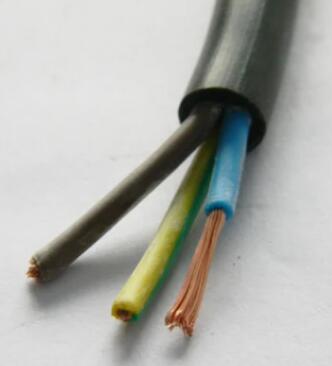Electrifying Protection: Unraveling the Purpose of Shielding in Electric Wires
2023-12-21
Introduction:
In the intricate web of electrical systems, wires serve as the lifelines that carry the currents powering our modern world. Yet, in certain applications, these electric wires require an extra layer of defense to ensure optimal performance and safety. This additional safeguard comes in the form of shielding—a crucial element that plays a pivotal role in the reliability and functionality of electric wires. In this blog post, we'll delve into the purpose of shielding, exploring why it is employed in specific types of electric wires and how it enhances their performance.
Understanding Shielding in Electric Wires:
1. Electromagnetic Interference (EMI):
One of the primary purposes of shielding is to mitigate the effects of electromagnetic interference (EMI). EMI refers to the phenomenon where external electromagnetic fields can interfere with the signals transmitted through electric wires. This interference can lead to signal degradation, data corruption, or malfunctions in electronic systems.
2. Radio Frequency Interference (RFI):
Similar to EMI, shielding addresses radio frequency interference (RFI), which occurs when radio frequency signals from external sources disrupt the signals within electric wires. RFI can be particularly problematic in applications where precise and uninterrupted communication is essential.
3. Preventing Signal Leakage:
Shielding acts as a protective barrier that helps prevent the leakage of signals from the wire. In scenarios where signal confidentiality is crucial, such as in data transmission cables, shielding helps maintain the integrity of the transmitted information by containing the signals within the wire.
4. Crosstalk Reduction:
Crosstalk, the unwanted coupling of signals between adjacent wires, can occur in tightly packed cable configurations. Shielding helps reduce crosstalk by providing a physical barrier that limits the interaction between neighboring wires. This is especially important in high-density wiring environments.
5. Enhancing Signal Integrity:
Shielding contributes to the overall signal integrity by minimizing the impact of external factors on the transmitted signals. This is particularly significant in applications such as audio cables, where the fidelity of the signal is crucial for maintaining high-quality audio output.
6. Protection from External Influences:
In industrial settings or areas with high electromagnetic activity, electric wires may be exposed to external influences like machinery, power lines, or other electronic equipment. Shielding serves as a protective layer that helps insulate the wires from these external factors, reducing the risk of interference and damage.
Types of Shielding:
1. Braided Shielding:
Braided shielding consists of a mesh of fine wires woven around the insulated conductor. This type of shielding provides flexibility and effective protection against EMI and RFI.
2. Foil Shielding:
Foil shielding involves wrapping the insulated conductor with a thin metal foil. This type of shielding is effective in providing a continuous, impermeable barrier against external electromagnetic influences.
3. Combination Shielding:
Some cables may feature a combination of both braided and foil shielding for enhanced protection. This combination approach provides a comprehensive defense against various forms of interference.
Conclusion:
Shielding in electric wires serves as a silent guardian, protecting the integrity of signals and ensuring the seamless operation of various electronic systems. By addressing the challenges posed by electromagnetic interference, shielding plays a vital role in enhancing the reliability, safety, and performance of electric wires in diverse applications. As technology continues to advance, the importance of effective shielding remains a cornerstone in the development of robust and resilient electrical systems that power our interconnected world.



